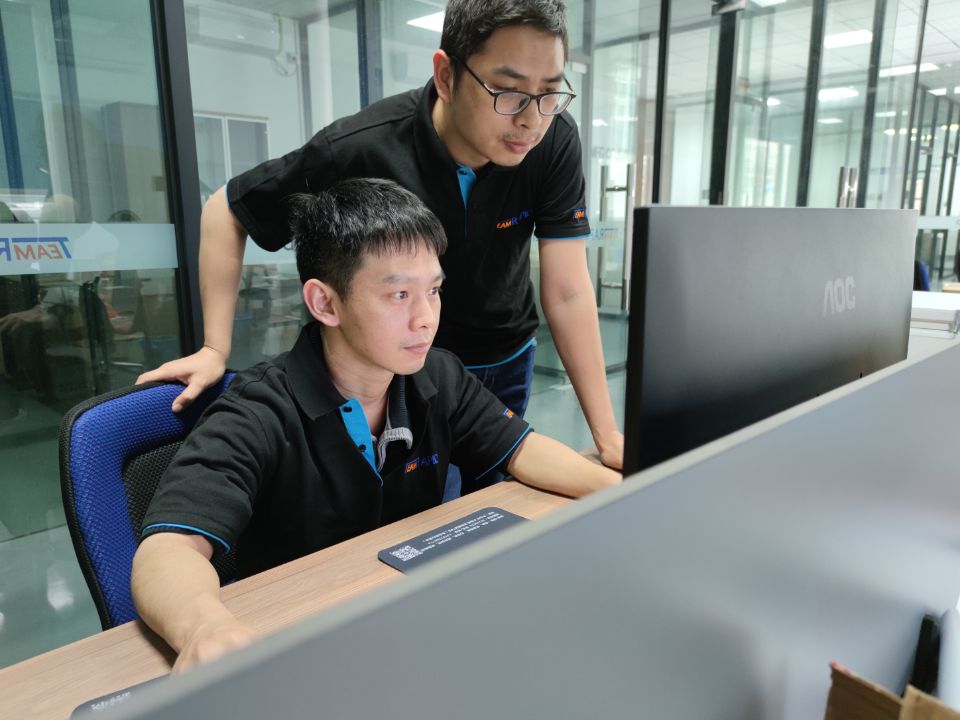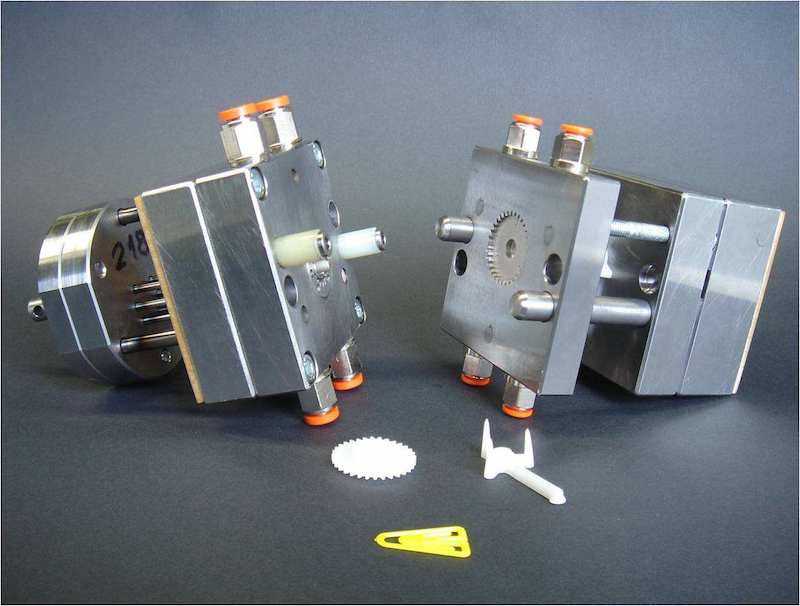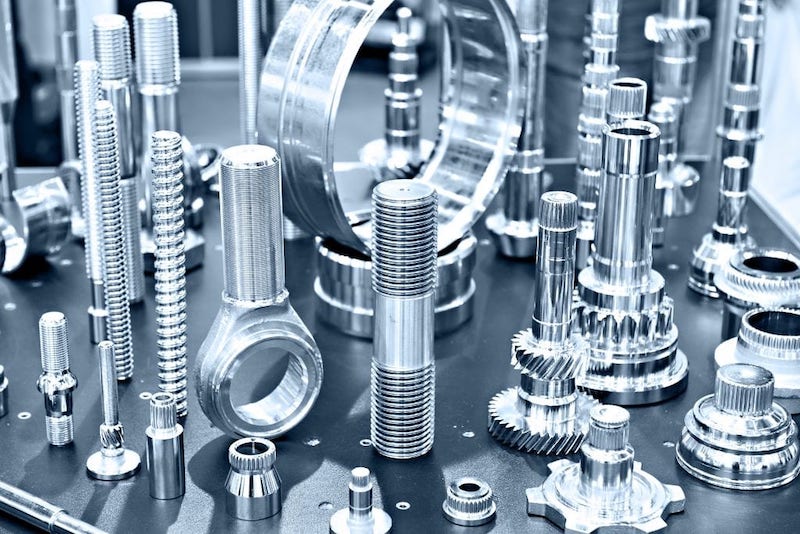Why are more manufacturers shifting towards High-Mix Low-Volume (HMLV) manufacturing in today's rapidly evolving market? As consumer demands become increasingly personalized and product lifecycles shrink, traditional mass production methods are no longer sufficient for many industries. HMLV manufacturing has emerged as a crucial strategy, enabling companies to produce a wide variety of products in smaller quantities while maintaining efficiency and quality.
From medical devices to luxury automobiles, this flexible manufacturing approach is revolutionizing how companies meet diverse customer needs. In this blog, we'll explore what HMLV manufacturing is, why it matters, and how businesses can implement it successfully.

What is High-Mix Low-Volume (HMLV) Manufacturing?
High-Mix Low-Volume (HMLV) manufacturing is a modern production approach that focuses on creating a wide variety of products in smaller quantities. This manufacturing strategy has emerged as a response to growing market demands for customization, flexibility, and rapid product development. Unlike traditional mass production methods, HMLV manufacturing emphasizes adaptability and customization over standardization and volume.
Breaking Down the "High-Mix" Component
High-Mix refers to the production of a diverse range of products or product variations within the same manufacturing facility. This includes:
Product Diversity: Multiple product lines with different specifications
Customization Options: Various designs, materials, and configurations
Production Flexibility: Ability to switch between different products quickly
Diverse Specifications: Different manufacturing requirements for each product type
Understanding the "Low-Volume" Aspect
Low-Volume production is characterized by:
Small Batch Sizes: Production quantities ranging from a few units to several thousand
Make-to-Order: Manufacturing based on specific customer requirements
Limited Production Runs: Shorter production cycles for each product variant
Quick Turnaround: Ability to complete small orders efficiently
How HMLV Differs from Traditional Manufacturing
Traditional Manufacturing vs. HMLV:
Production Volume:
Traditional: High-volume, standardized products
HMLV: Low-volume, customized products
Setup Frequency:
Customer Focus:
Traditional: Mass market, general consumer needs
HMLV: Specific customer requirements and specifications
Inventory Approach:
Key Characteristics of HMLV Production Systems
Core Features of HMLV manufacturing include:
Flexible Production Lines: Equipment and processes that can be quickly reconfigured for different products
Advanced Quality Control: Sophisticated inspection systems like industrial CT scanning for maintaining consistency across diverse product lines
Skilled Workforce: Highly trained operators capable of handling various production processes
Digital Integration: Smart manufacturing systems that can manage multiple product specifications and workflows
Efficient Setup Management: Quick changeover capabilities to switch between different products
Customer-Centric Approach: Production processes designed around specific customer needs and requirements
HMLV manufacturers typically operate in industries where customization and precision are crucial, such as:
This manufacturing approach represents a significant shift from traditional mass production methods, offering greater flexibility and customization capabilities while maintaining efficiency and quality standards. As market demands continue to evolve toward more personalized products, HMLV manufacturing has become increasingly important in modern manufacturing strategies.

The Growing Importance of HMLV Manufacturing
Current Market Trends Driving HMLV Adoption
Consumer Demand Shift is revolutionizing manufacturing approaches:
Growing preference for personalized products
Increasing demand for quick product iterations
Rising expectations for product customization
Shorter product life cycles
Market Dynamics pushing towards HMLV include:
Rapid technological advancements
Changing consumer preferences
Global competition
Need for faster time-to-market
Why Traditional Mass Production Isn't Always the Answer
Limitations of Mass Production in modern markets:
Inflexibility:
Unable to quickly adapt to market changes
Limited customization options
High inventory costs
Long production lead times
Market Mismatch:
Cannot efficiently handle small orders
Difficulty in product personalization
Excess inventory risk
Higher costs for small batches
3. Real-World Applications of HMLV Manufacturing
HMLV manufacturing has found successful applications across various industries, each leveraging its unique capabilities to meet specific market demands and customer requirements.
3.1 Automotive Industry
Custom Luxury Vehicles represent a prime example of HMLV manufacturing:
Personalized interior configurations
Bespoke exterior modifications
Custom color schemes and finishes
Limited edition model production
Specialized Automotive Components include:
Custom exhaust systems
Modified engine components
Specialized suspension systems
Unique body panels and aerodynamic elements
Performance Parts Manufacturing focuses on:
High-performance brake systems
Custom turbocharger assemblies
Racing-specific components
Specialized transmission parts
3.2 Aerospace and Defense
Aircraft Components demonstrate complex HMLV applications:
Custom avionics enclosures
Specialized fastening systems
Unique structural elements
Mission-specific modifications
Custom Turbine Manufacturing involves:
Precision-engineered turbine blades
Specialized cooling systems
Custom combustion components
Modified engine parts
Specialized Military Equipment includes:
Custom communication systems
Specialized armor components
Mission-specific modifications
Unique tactical equipment
3.3 Medical Devices
Customized Implants showcase advanced HMLV capabilities:
Patient-specific joint replacements
Custom spinal implants
Personalized cranial plates
Tailored orthopedic solutions
Patient-Specific Surgical Instruments feature:
Custom cutting guides
Specialized surgical tools
Precise measurement devices
Unique positioning instruments
Dental Aligners and Prosthetics demonstrate precision HMLV:
Custom dental aligners
Personalized dental implants
Unique prosthetic components
Individual orthodontic appliances
3.4 Consumer Electronics
High-End Audio Equipment exhibits HMLV excellence:
Specialized Gadgets include:
Custom gaming controllers
Modified computer peripherals
Unique interface devices
Limited run electronic products
Custom Electronic Components feature:
Each of these applications demonstrates how HMLV manufacturing adapts to specific industry needs while maintaining high quality and efficiency. The success of HMLV in these industries highlights its versatility and effectiveness in meeting specialized production requirements. Through advanced technologies like industrial CT scanning and sophisticated quality control measures, manufacturers can ensure consistency and precision across diverse product lines while maintaining the flexibility needed for custom production.
4. Benefits of High-Mix Low-Volume Manufacturing
Production Flexibility Advantages
Adaptive Manufacturing Capabilities represent one of the most significant advantages of HMLV manufacturing. Companies can rapidly switch between different product lines, modify production processes, and accommodate varying batch sizes without significant downtime. This flexibility allows manufacturers to:
Quickly switch between different product lines
Modify production processes on demand
Accommodate varying batch sizes
Implement rapid design changes
Process Versatility enables organizations to maximize their production resources. By utilizing the same equipment and production lines for multiple product variants, companies can achieve higher equipment utilization rates and maintain a more flexible workforce. This includes:
Multiple product variants on the same line
Easy integration of new products
Efficient equipment utilization
Flexible workforce deployment
Customer Satisfaction Improvements
Customization Benefits directly impact customer satisfaction in HMLV manufacturing environments. By producing products tailored to specific customer requirements, companies can deliver exactly what their customers need, when they need it. This approach ensures:
Products tailored to specific customer needs
Rapid response to customer requests
Personalized product features
Enhanced customer engagement
Quality Focus becomes more achievable in HMLV manufacturing due to the smaller batch sizes and increased attention to detail. With fewer units being produced simultaneously, quality control measures can be more stringent, resulting in:
Detailed attention to each product
Stringent quality control
Reduced defect rates
Better product consistency
Inventory Optimization
Lean Inventory Management is a natural outcome of HMLV manufacturing approaches. By producing smaller batches based on actual demand, companies can significantly reduce their warehousing costs and minimize the risk of obsolescence, leading to:
Just-in-Time Production becomes more feasible under HMLV manufacturing. Companies can implement made-to-order strategies that minimize storage requirements and reduce waste, enabling:
Made-to-order manufacturing
Reduced storage requirements
Efficient material utilization
Decreased waste
Quick Market Response Capability
Market Adaptability gives HMLV manufacturers a significant competitive advantage. The ability to rapidly respond to market trends and test new product concepts allows companies to:
Rapidly respond to market trends
Test new product concepts
Address niche market demands
Launch products faster
Competitive Advantage is enhanced through faster time-to-market capabilities and quick design iterations. This responsiveness creates:
Innovation Opportunities
Product Development benefits significantly from HMLV manufacturing capabilities. The ability to quickly prototype and test new designs provides:
Technology Integration becomes more manageable in HMLV environments, enabling:
Advanced manufacturing techniques
Digital process optimization
Smart factory implementation
Continuous improvement
Strategic Benefits of HMLV manufacturing extend across multiple areas:
Business Growth:
Operational Excellence:
The combination of these benefits makes HMLV manufacturing an increasingly attractive option for companies looking to compete in today's dynamic market environment. By enabling greater flexibility, improved customer satisfaction, optimized inventory management, quick market response, and enhanced innovation capabilities, HMLV manufacturing provides a solid foundation for sustainable business growth and success.

5. Common Challenges in HMLV Manufacturing
5.1 Operational Challenges
Production Complexity presents significant challenges in HMLV environments. Managing multiple product variations simultaneously requires sophisticated scheduling systems and careful coordination of resources. Organizations must juggle diverse material requirements, complicated workflow patterns, and intricate process sequences, all while maintaining efficiency and meeting delivery deadlines.
Setup Time Management has become a critical concern in HMLV manufacturing. The frequent changeovers between different products can lead to significant downtime and reduced productivity. Companies must optimize their setup procedures while managing:
Complex tooling requirements
Equipment reconfiguration needs
Production line adjustments
Process validation steps
Quality verification procedures
Worker Training Requirements pose unique challenges in HMLV environments. The diverse nature of production demands a highly skilled workforce capable of handling multiple processes and products. Employees need extensive training to:
Develop multiple technical skills
Maintain process knowledge
Adapt to frequent changes
Handle various equipment types
Understand quality requirements
Equipment Utilization challenges stem from the need to balance flexibility with efficiency. Machinery must be adaptable enough to handle various product specifications while maintaining optimal performance levels. This requires careful planning of:
5.2 Quality Control Challenges
Maintaining Consistent Quality becomes increasingly complex in HMLV manufacturing. The variety of products and frequent process changes make it difficult to maintain uniform quality standards. Organizations must develop robust quality control systems that can adapt to different product specifications while ensuring consistent output quality.
Inspection Methods require significant sophistication in HMLV environments. Companies need to implement:
Multiple inspection protocols
Advanced testing procedures
Varied quality criteria
Complex measurement systems
Specialized inspection equipment
Documentation Requirements have become more demanding with HMLV manufacturing. Each product variant needs detailed documentation covering:
Process specifications
Quality parameters
Testing procedures
Compliance requirements
Traceability records
Quality Assurance Processes need careful attention in HMLV settings. Organizations must develop comprehensive systems that can handle the complexity of multiple product lines while maintaining strict quality standards. This includes implementing:
Robust validation procedures
Regular auditing processes
Continuous monitoring systems
Corrective action protocols
Performance tracking methods
5.3 Cost Management
Pricing Strategies in HMLV manufacturing require careful consideration of multiple factors. Companies must develop pricing models that account for:
Variable production costs
Setup time expenses
Small batch inefficiencies
Customization requirements
Market positioning
Resource Allocation becomes particularly challenging in HMLV environments. Organizations must carefully balance their resources across multiple product lines while maintaining efficiency. This involves strategic planning of:
Labor distribution
Equipment scheduling
Material management
Time allocation
Capacity utilization
Investment Considerations need thorough evaluation in HMLV manufacturing. Companies must carefully assess their investment needs in:
Cost Reduction Techniques focus on maintaining efficiency despite the complexity of HMLV operations. Organizations must implement strategies for:
The successful management of these challenges requires a balanced approach that combines strategic planning with operational excellence. Organizations must develop comprehensive solutions that address both immediate operational needs and long-term strategic goals while maintaining the flexibility and responsiveness that HMLV manufacturing demands.
6. Implementing HMLV Manufacturing Successfully
6.1 Essential Technologies
Industrial CT Scanning has revolutionized quality control in HMLV manufacturing. This technology enables non-destructive testing and inspection of complex parts, providing detailed insight into internal structures, early defect detection, and comprehensive quality validation without compromising products.
Advanced Inspection Systems ensure quality consistency across diverse product lines. These systems combine automation with precise measurement capabilities, providing real-time monitoring, automated defect detection, and data-driven quality management for multiple product variations.
Digital Work Instructions transform production floor operations by ensuring consistent process execution while maintaining flexibility. They provide clear visual guidance, enable real-time updates, and serve as valuable training tools for operators managing multiple processes.
Manufacturing Execution Systems (MES) integrate various aspects of production management. These systems provide real-time visibility, enable efficient resource allocation, and facilitate quick response to production changes across multiple product lines.
6.2 Process Optimization
Standardizing Methods balances consistency with flexibility in HMLV implementation. Organizations establish standard procedures while maintaining adaptability for different product requirements, reducing errors and improving efficiency across product lines.
Flow Optimization focuses on improving material movement, production sequencing, and resource utilization. This includes minimizing bottlenecks, reducing setup times, and ensuring smooth transitions between different product runs.
Communication Improvements ensure effective coordination in complex HMLV operations. Clear communication channels, regular team meetings, and digital tools for real-time updates help maintain smooth operations across departments.
Inventory Management Strategies handle multiple product lines while maintaining efficient inventory levels. This includes implementing just-in-time systems, smart storage solutions, and effective forecasting methods.
6.3 Workforce Considerations
Training Requirements prepare workers for handling multiple products and processes. Comprehensive programs cover technical skills, quality awareness, and safety procedures, supported by continuous learning opportunities.
Skill Development enables workers to manage multiple processes while maintaining quality standards. Structured approaches combine formal training with on-the-job experience, ensuring workforce capability across different product lines.
Team Organization promotes cross-functional capabilities and clear communication. Teams are structured to respond quickly to changing production requirements while maintaining consistent quality and efficiency.
Knowledge Management captures and shares best practices, procedures, and expertise. This includes maintaining information repositories, mentoring programs, and effective methods for knowledge transfer across the organization.
The successful implementation of HMLV manufacturing requires integrating technology, optimizing processes, and developing workforce capabilities. Regular assessment and adjustment of strategies ensure long-term success in these complex manufacturing environments.
Conclusion
Looking ahead, HMLV manufacturing will continue to grow in importance as markets demand more personalized products and shorter production cycles. Success in this manufacturing approach requires careful balance between flexibility and efficiency, supported by continuous improvement in processes, technology, and workforce capabilities.
At TEAM MFG, we specialize in High-Mix Low-Volume manufacturing solutions tailored to your unique needs. Whether you're looking to enhance production flexibility, improve quality control, or optimize your manufacturing processes, our expert team is here to help. Contact us today to discover how our HMLV expertise can drive your manufacturing success.
Transform your manufacturing future with TEAM MFG.


















